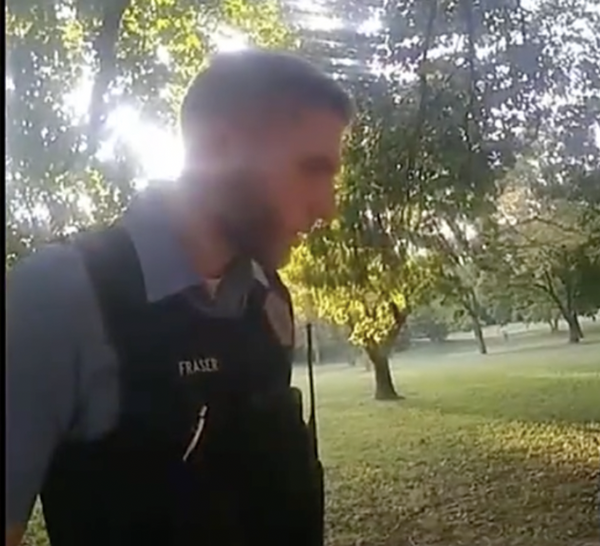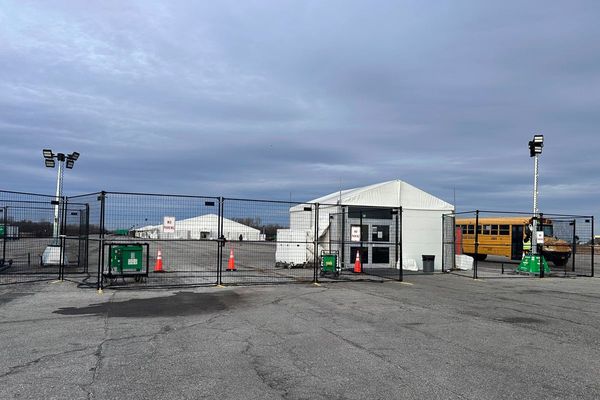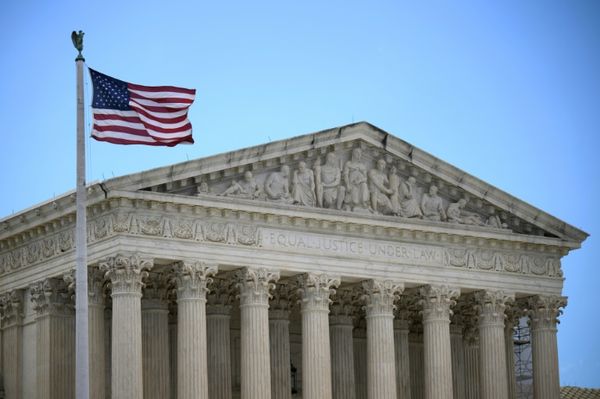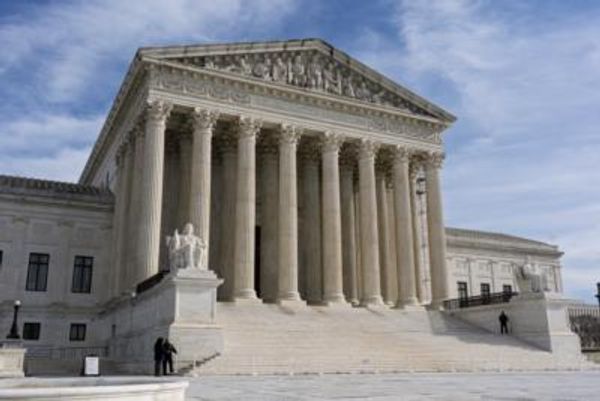
The renewal of fighting in the Azerbaijani territories occupied by Armenian forces could have been foretold. A four-day outbreak of hostilities in mid-July occurred in northwest Azerbaijan, 60 miles away from Nagorno-Karabakh, but that is not even the proximate cause of today’s fighting.
The current conflict broke out in the late 1980s, when Armenians in Azerbaijan’s Nagorno-Karabakh Autonomous Oblast (NKAO) began organizing to take the territory out of Azerbaijan. When the NKAO Regional Council voted to unite with the Armenian Soviet Socialist Republic in February 1988, central Soviet authorities abolished the local government and instituted direct rule from Moscow.
In 1992, a year after the two countries became independent, Armenian forces seized control of the “Lachin corridor,” a winding mountain road since improved with funds from the Armenian diaspora, connecting Nagorno-Karabakh to Armenia. Turning northward, they then seized and held the Kelbajar district of Azerbaijan. They continued, until early last month, to hold not only the former NKAO but seven additional Azerbaijani districts outside the former NKAO, forming a bloc having a long common border with Armenia.
That was the situation when the war ended in 1994. Despite periodic skirmishes, the worst of which were in 2016, the status quo remained—until last month. The whole area under occupation represents 20 percent of Azerbaijan’s internationally recognized territory. No fewer than four U.N. Security Council Resolutions (822, 853, 874, and 884) adopted in 1993 called for Armenian troops to leave all these occupied territories without delay.
Approximately 800,000 Azerbaijanis were ethnically cleansed from those areas. Another 200,000 were driven out of Armenia proper, finding shelter as refugees in Azerbaijan. The Organization for Security and Cooperation in Europe (OSCE) set up its “Minsk Group”—co-chaired by the United States, France, and Russia—to promote negotiations for settlement of the conflict. For a quarter century, Azerbaijan has had to support a large number of refugees and internally displaced persons representing 10 percent of its total population.
Azerbaijan was patient for over a generation. With Armenia, it subscribed to the Madrid Principles for a settlement, proposed by the Minsk Group more than a decade ago. These called for returning the seven districts around Nagorno-Karabakh to Azerbaijani control; giving Nagorno-Karabakh an interim status that would provide “guarantees for security and self-governance”; linking it with Armenia by a corridor; determining its final legal status “through a legally binding expression of will”; returning all refugees and displaced people to their former places of residence; and putting in place a peacekeeping operation.
These negotiations languished. Azerbaijan warned over the years that the use of force would be a last resort if the peace process were exhausted. This resort to force finally occurred after Armenia overtly and unilaterally rejected the Madrid Principles. That rejection of the agreed basis for talks brought negotiations to an impasse. Baku still attempted to revive the defunct peace talks. By doing so, it probably sent Yerevan the wrong signal.
Instead, Armenia completely discarded the Madrid Principles. The country’s current prime minister, Nikol Pashinyan, who came to power in what resembled a “color revolution” in May 2018, was initially conciliatory toward Azerbaijan. Early on, he gave the impression that he was an open interlocutor ready to discuss thorny issues. Unfortunately, he was unable to make good on the many promises he made to the Armenian public—promises that, if realized, would have improved Armenia’s isolated socioeconomic situation and heavy dependence on Russia. After failing to deliver on these preelection promises, Pashinyan became a victim of the irredentist nationalism seemingly required to survive in Armenian domestic politics.
Trapped there, he seems then to have fallen hostage to his own nationalist rhetoric, which has in turn strengthened domestic Armenian populism and militarism. This irredentist nationalism finally touched not just the Nagorno-Karabakh issue—which Pashinyan, like his predecessors, politically manipulated—but extended to other neighbors beyond Azerbaijan.
In particular, Pashinyan ended up making territorial claims against Turkey. He did this by unleashing a debate over the 1920 Treaty of Sèvres, which never entered into force and was replaced by the 1923 Treaty of Lausanne. The Treaty of Sèvres had been the Allies’ attempt, after World War I, to liquidate the Ottoman Empire and distribute its territories. In that division, Armenia would have received part of what is now the northeastern region of modern Turkey.
During the centenary celebrations of this Treaty of Sèvres, in August 2020, Pashinyan characterized the never ratified treaty as a “historical fact” and called for the restoration of historical justice. This meant that the Armenian state, in his person as head of government, was overtly claiming title to lands that have been part of Turkey for 100 years.
The previous year, in March 2019, his defense minister, Davit Tonoyan, had declared in front of the Armenian community in New York: “As the minister of defense, I announce that this [old] format, territories [in exchange] for peace, I have rephrased it. We are doing the opposite—a new war for new territories.” This threatening slogan could have referred to more territories around those already occupied, to Azerbaijan’s exclave Nakhchivan, or to yet other lands. What it meant was that Azerbaijan should have anticipated military provocations from Armenia to carve out new territories. These came with the July-August hostilities in the country’s northwest Tovuz region, 100 miles from Nagorno-Karabakh, which had been peaceful for over 26 years.
The domestic political pressure against Pashinyan increased when he put former President Robert Kocharyan and former Prime Minister Serzh Sargsyan on trial, respectively for “overthrowing the constitutional order of Armenia” and for embezzlement. Sargsyan, who was Kocharyan’s handpicked successor, had jailed Pashinyan in 2009 in connection with the latter’s protests against allegedly fraudulent elections. Both Sargsyan and Kocharyan are originally from Karabakh itself and members of the same political clan that dominated Armenian politics from the mid-1990s until just a couple years ago.
Five months after Tonoyan’s statement in New York, Pashinyan in August 2019 undermined the myth that Armenians in the occupied territories—which they called the “Nagorno-Karabakh Republic,” and is unrecognized internationally—governed themselves. Specifically, in a controversial speech on Aug. 5 during the pan-Armenian games held in Khankendi (also called Stepanakert), Pashinyan declared that “Nagorno-Karabakh is Armenia, and that is all.” In words akin to a verbal annexation, he declared that the territories were part of Armenia itself.
No Armenian politician had said that since the war in the early 1990s, first because it was political dynamite—since the territory was internationally recognized to be part of Azerbaijan—and second because Armenia sought to maintain the fig leaf of independence of the Nagorno-Karabakh Republic from Armenia proper. Indeed, in the Chiragov et al. v. Armenia court case before the European Court of Human Rights in Strasbourg, the court ruled in 2015 that in fact it was Armenia, and not the local administration in Nagorno-Karabakh, that exercises effective control over Nagorno-Karabakh and the surrounding territories.
Pashinyan’s declaration represented a definitive rejection of the OSCE’s Madrid Principles, according to which the territories’ final status would be the product of negotiations. His was the first Armenian government failing to give the Madrid Principles at least lip service.
In July, after several months of belligerent rhetoric, he explicitly and overtly confirmed his rejection of the Madrid Principles by proposing seven new conditions for negotiations with Azerbaijan. The Madrid Principles had called for the eventual participation in those negotiations by both the Armenian and the (ethnically cleansed) Azerbaijani populations of Nagorno-Karabakh. Pashinyan now demanded that Armenian representatives from the region should participate on an equal basis with Armenia and Azerbaijan themselves—and without their expelled ethnic Azerbaijani counterparts.
As the conflict escalates, Pashinyan now has a Vladimir Putin problem; the man who could act as Armenia’s patron and ally is not doing so. Kocharyan and Sargsyan both had good personal relations with Russia’s president. When Pashinyan was in the political opposition, however, he criticized Armenia’s dependence on Russia and the advantage that Russia took of Armenia’s weakness and isolation. As a result, Putin is not particularly sympathetic to Pashinyan. The Russian media have not always treated him kindly.
Russia still more or less kept a show of political balance as a Minsk Group co-chair, having refrained from extending open political and military support to Armenia, despite having a military base at Gyumri in Armenia hosting 3,000 soldiers as well as an air base near the capital, Yerevan. Russia has generally supported Armenia in its conflict with Azerbaijan, despite developing increasingly friendly relations with Baku as well over the last dozen years.
Today, the Russian military continues to resupply Armenia. It flew generous resupplies to Armenia even during the July hostilities. The airplanes took a Russia-Kazakhstan-Turkmenistan-Iran-Armenia flight path because Georgia refused overflight rights. Azerbaijan did not understand Russia’s military assistance to Armenia in the middle of the conflict, since Baku had been significantly improving its relations with Russia after the United States lost interest in the region more than a decade ago.
Azerbaijan succeeded in late September in taking control of strategic heights overlooking the two highways that connect Armenia to Nagorno-Karabakh. (Indeed, a further incitement to Azerbaijan was probably an official Armenian government announcement in late July that a third would be constructed this year.) The Armenian military probably knows that it is in danger of facing a long-term siege there. It has been trying to distract and provoke Azerbaijan with increasing attacks on civilian Azerbaijani towns and cities outside the conflict region.
Russia is keen to preserve its influence in what it calls its “near abroad,” where it cohabited with the countries concerned for 70 years under the Soviet Union, not to mention a further-reaching imperial Tsarist history. It sells arms to both sides. Thanks to Western embargoes, it is now Azerbaijan’s largest arms supplier, although Baku pays Moscow full world prices in hard currency, whereas Yerevan pays domestic Russian prices with ruble-denominated loans from Moscow.
Turkey, on the other hand, has always expressed political and military support for Azerbaijan’s struggle to recover its occupied territories. It has not acted any different this time; indeed, Turkish drones purchased by Azerbaijan were an important factor turning events in Azerbaijan’s favor. Azerbaijan also now has missile batteries and long guns, mainly from Russia, that it did not have before. With those and new drones from Turkey, it has been picking off Armenian tanks and other armor rather regularly and with relative impunity, although it has suffered some losses.
Given the close ties between Turkey and Azerbaijan, Pashinyan himself has played the Turkophobia card and even the religious card, going so far as to suggest that the conflict between Christian Armenia and Muslim Azerbaijan is a clash of civilizations. This all seems to betray a certain desperation. Russia declines to support him as strongly as he had wished, and the worldwide Armenian diaspora has been unable to help him when push came to shove.
Azerbaijan’s battleground victories are mounting. Yerevan’s refusal to engage in meaningful negotiations and withdraw from Azerbaijani lands enhances Baku’s determination to make more advances. Twenty-six years of waiting for negotiations have only produced an increasingly worse situation. Azerbaijan still hosts 1 million refugees and internally displaced persons; Armenia has increased its settlements in the occupied territories; and goods manufactured there are labeled as “made in Armenia” and exported without a problem to the European Union. The rhetoric out of Yerevan has only gotten worse over time.
The Kremlin has been caught out in the South Caucasus. It was preoccupied with Belarus, the Nord Stream 2 pipeline, the unexpected uproar over the poisoning of the opposition activist Alexei Navalny, and increasing domestic protest and dissatisfaction. It is possible that Moscow will wait until Azerbaijan achieves certain territorial gains to weaken Pashinyan in Armenia and then use its own influence in Yerevan to oust him and install another Armenian leader more pliable to Russia’s wishes.
In doing so, Russia would accomplish several objectives. It would keep the conflicting parties on a short leash by perpetuating a lingering conflict, thus maintaining the Kremlin’s clout in the region while earning some points with Azerbaijan, with which it enjoys generally good relations. Moreover, it would punish the so-called revolutionary and unpredictable Pashinyan for overstepping Armenia’s historic role as a client state of Russia.







